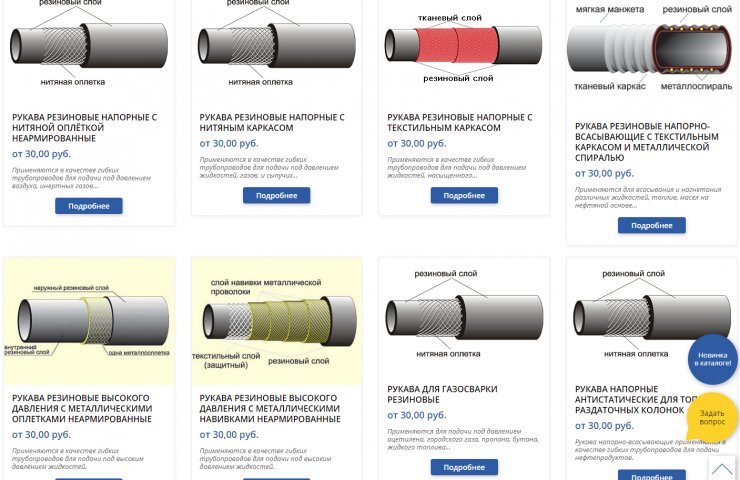Textile or wire reinforced hydraulic hoses are designed for transporting fluids, transferring energy under high pressure. A fabric or metal frame provides reinforcement to the base material - rubber. At the same time, the flexibility of the technical product is maintained. Despite the high performance characteristics, the hoses fail over time. You can buy high pressure hoses from the company LLC "USA", but for them to work, you need to know how to choose and replace them correctly.
Sleeve Guidelines
There is no universal sleeve. Each product is designed to work in a specific environment with specific mechanisms. At the same time, each model has a limited service life.
To choose the right RVD, you need to take into account the combination of the following factors:
- Working pressure in the hydraulic system must be equal to or less than that indicated on the product. It is important to take into account the amplitude of the jumps. The peak of the impulses must also not exceed the permissible maximum pressure set by the manufacturer.
- Suction lines must use positive and negative pressure hoses. This is due to the fact that the pumps are capable of forming a positive pressure in the inlet flow.
- In autoclaves, underwater and similar equipment, the ambient pressure may exceed the pressure inside the hose. For such mechanisms, their manufacturer will tell you how to choose a RVD. Please consult before purchasing.
- Hose parameters must match the temperature range in which they will operate. Otherwise, at critically low or high temperatures, rapid wear of the inner layer occurs, reducing flexibility.
- Fluid and other conveyed media must meet the specifications for the hose.
- An effusion index is determined for each product . Liquids and gases are able to penetrate the hose walls. The leakage rate depends on the material of the sleeve. This factor must be taken into account especially when working with gaseous media.
- Environment can negatively affect the hose, fittings. They are destroyed by chemicals, UV rays, salts, acids, electricity. The product must be designed for use in a specific environment.
- Fluids being conveyed are capable of generating static electricity inside the hose. As a result of the discharge, the rubber walls are burned out. Discharge resistant hoses are suitable for these hydraulic systems.
- Sleeve diameter should not be selected less than the recommended parameter. Pressure drops will quickly damage it.
- To carry out the installation correctly , you need hose fittings of the appropriate dimensions, which will ensure the tightness of the system. Swivel adapters, swivel joints, fasteners for fixing it in a certain position will increase the service life of the hose.
Important! A minimum bend radius is indicated for each high pressure hose. Here you need to choose the right length. In a short hose in an area with a reduced bend radius, the passage of fluid is impeded, and the walls break.
Installation guidelines
Having bought high pressure hydraulic hoses , check them compliance with the recommended parameters.
- Make installation, avoiding sharp bends, twisting.
- If there is a risk of mechanical impact, cover the hose with plastic or textile protection.
- Use fittings only of the correct size and type of connection.
- Remove air pockets from the hydraulic system after installation.
- Inspect for leaks.
- When starting the equipment for the first time, reduce the operating pressure to pre-test the system.
- Move to a safe distance during testing.




